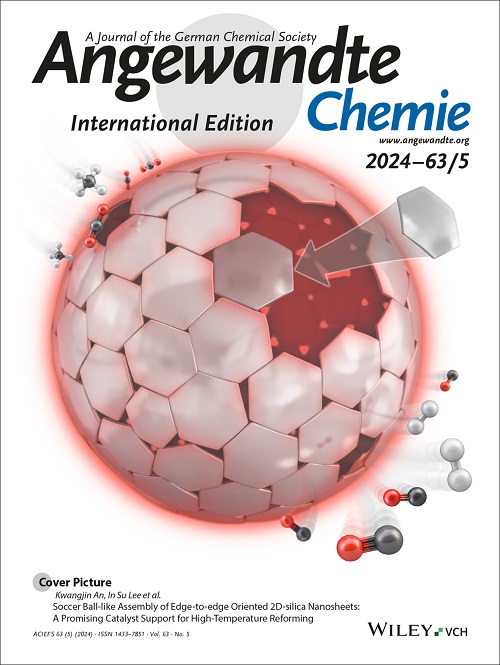镍空心纤维上氯掺杂SnO2纳米花在安培电流密度下增强CO2电还原
IF 16.1
1区 化学
Q1 CHEMISTRY, MULTIDISCIPLINARY
引用次数: 0
摘要
可再生能源驱动的电化学二氧化碳减排已经成为可持续未来的一项有前途的技术。然而,在安培电流密度下实现可储存液体燃料的高效生产仍然是二氧化碳电还原大规模实施的一个重大障碍。本文报道了一种新型的催化电极,该电极由排列在三维中空镍纤维表面的氯掺杂SnO2纳米花组成。该电极在将CO2转化为甲酸方面表现出优异的电催化性能,在2 a cm-2下实现了99%的甲酸选择性和93%的CO2单次转化率。此外,它还表现出优异的稳定性,在电流密度为3 a cm-2的情况下,甲酸选择性在520小时内保持在94%以上。实验结果与理论计算相结合证实,中空纤维渗透效应促进了传质的增强,加上保留良好的Sn4+基团和Sn-Cl键,协同提高了CO2转化活性。氯的掺入增强了SnO2的电子传递和CO2吸附,大大降低了关键中间体*OCHO生成的反应能垒,促进了甲酸的生成。本文章由计算机程序翻译,如有差异,请以英文原文为准。
Chlorine-Doped SnO2 Nanoflowers on Nickel Hollow Fiber for Enhanced CO2 Electroreduction at Ampere-level Current Densities
Renewable energy-driven electrochemical CO2 reduction has emerged as a promising technology for a sustainable future. However, achieving efficient production of storable liquid fuels at ampere-level current densities remains a significant hurdle in the large-scale implementation of CO2 electroreduction. Here we report a novel catalytic electrode comprising chlorine-doped SnO2 nanoflowers arrayed on the exterior of three-dimensional nickel hollow fibers. This electrode demonstrates exceptional electrocatalytic performance for converting CO2 to formate, achieving a remarkable formate selectivity of 99% and a CO2 single-pass conversion rate of 93% at 2 A cm-2. Furthermore, it exhibits excellent stability, maintaining a formate selectivity of above 94% for 520 h at a current density of 3 A cm-2. Experimental results combined with theoretical calculations confirm that the enhanced mass transfer facilitated by the hollow fiber penetration effect, coupled with the well-retained Sn4+ species and Sn-Cl bonds, synergistically elevates the activity of CO2 conversion. The incorporation of chlorine into SnO2 enhances electron transport and CO2 adsorption, substantially lowering the reaction energy barrier for the crucial intermediate *OCHO formation, and boosting the formate production.
求助全文
通过发布文献求助,成功后即可免费获取论文全文。
去求助
来源期刊
CiteScore
26.60
自引率
6.60%
发文量
3549
审稿时长
1.5 months
期刊介绍:
Angewandte Chemie, a journal of the German Chemical Society (GDCh), maintains a leading position among scholarly journals in general chemistry with an impressive Impact Factor of 16.6 (2022 Journal Citation Reports, Clarivate, 2023). Published weekly in a reader-friendly format, it features new articles almost every day. Established in 1887, Angewandte Chemie is a prominent chemistry journal, offering a dynamic blend of Review-type articles, Highlights, Communications, and Research Articles on a weekly basis, making it unique in the field.

 求助内容:
求助内容: 应助结果提醒方式:
应助结果提醒方式:


